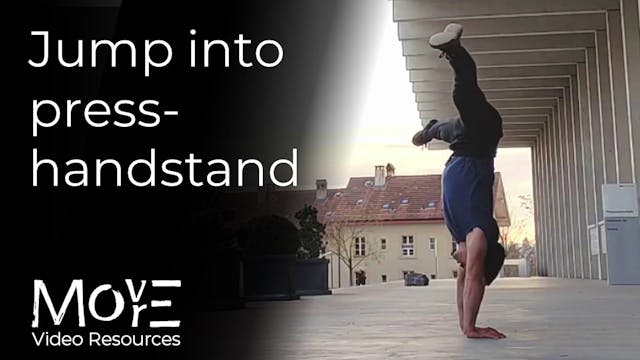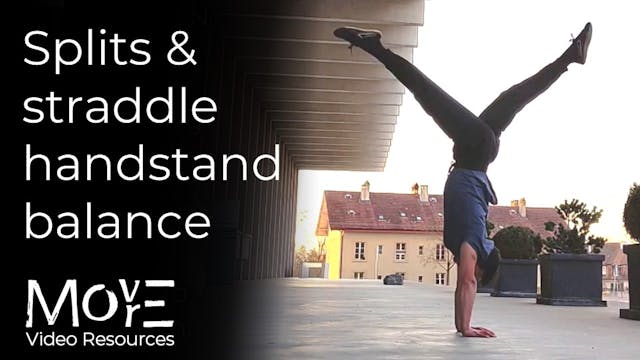Jump to Tuck-handstand hold
Handstand balance contexts
•
1m 1s
THE WHAT & WHY:
Some fundamental qualities of the 'Tuck-HS' to help develop understanding of the form and mechanics required to sustain it. Whilst it is recommended to place focus on learning your 'Straight-line' handstand before 'Tuck-HS', they can also be practiced/developed in tandem, with experience & information gathered in one context helping to inform the other.
In 'Tuck-HS', for example, the position (counterbalancing the weight of the legs to the front & pelvis to the back over stable shoulders and EXTENDED thoracic spine) facilitates better use of the UPPER-back/traps muscles.
LEARN MORE (subscriber-only):
https://drive.google.com/file/d/1Pb-QBmSNxehJY3Ld7Vrap8Gj14AC74nG/view?usp=drive_link
___________________
For programming, guidance, & support for your physical practice:
FREE fundamental prehabilitation program: https://www.movemoremp.com
Online Support (1 to 1 coaching): https://movemoremp.com/onlinesupport
Elements (standardised programs): https://www.movemoremp.com/elements
[email protected]
Up Next in Handstand balance contexts
-
Jump into press HS
THE WHAT:
Whilst this context does not significantly contribute to the straight-arm strength required to perform the full 'Press handstand', it allows development of the "popping" texture required for an efficient jump-up into straddle-handstand position which contributes to calibration of power-... -
Splits & straddle HS balance
THE WHAT & WHY:
The 'split' and 'straddle' are very simply & approachable options for expanding your experience of balancing handstand forms. Whilst it is advisable to already have some experience with your straight-line balancing handstand (consistent holds of 10-20 seconds) before opening more ... -
Handstand leg-proprioception sequence A
THE WHAT & WHY:
Whilst exploring different shapes and handstand forms helps to develop proprioception of the legs (i.e. where they are in space), their dynamic movement inevitably causes moderate to significant weight-shifting in inversion.The practice of continual re-/calibration of balance to...



